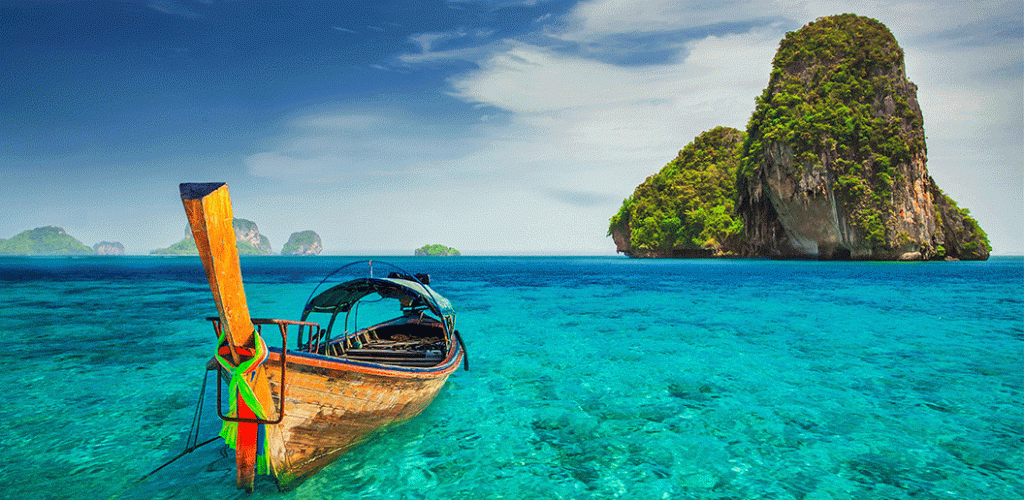As summer approaches, one dreams of sandy beaches and clear blue skies and the island of Phuket is precisely that. Often referred to as the Pearl of the Andaman, Phuket is Thailand’s largest island and one of the most popular destinations in the Kingdom for a holiday. Right now it is an especially good time to visit as foreign tourists are in low numbers due to the Coronavirus scare.
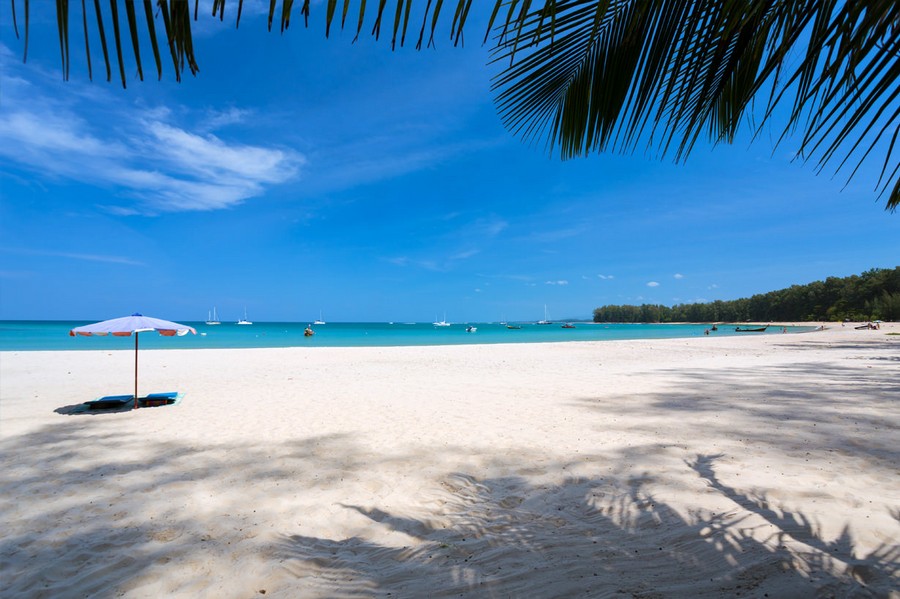
If you can’t choose what to do first, then pick the most comfortable plan—lay on a beach. Phuket is home to long stretches of white sandy beaches that are among the best in Southeast Asia. While one would typically go towards the famous, well-known beaches, friendly locals would recommend you visit the beaches that have no names for they will be far less crowded (this applies to restaurants as well). However, some beaches are well worth the visit, including Kata Noi beach (not to be confused with the more popular Kata beach), Freedom beach, Ao Sane beach, Nai Harn beach, Laem Ka and last but not the least, Patong Beach which lies in the heart of Phuket.
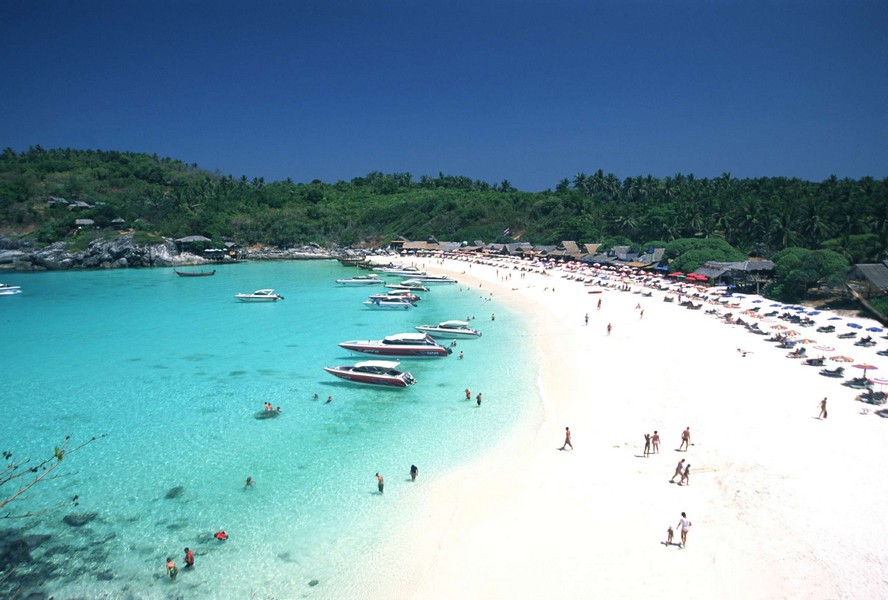
Most of the beaches are easily accessible and provide lovely views of the clear blue Andaman sea. With lots of space and plenty of places to eat and drink nearby, each beach is a pleasant place to relax. Most beaches also offer activities including snorkeling, jet-skiing, surfing and kite-flying among others.
For an outdoor adventure, head inland to Phuket’s Khao Sok National Park, where you can get the full jungle experience–complete with elephants, lazy rivers, and tree-house lodgings. This area is said to be one of the oldest rain forests in the world, and it’s undoubtedly one of the most scenic, with its magnificent cascading waterfalls and dramatic limestone formations.
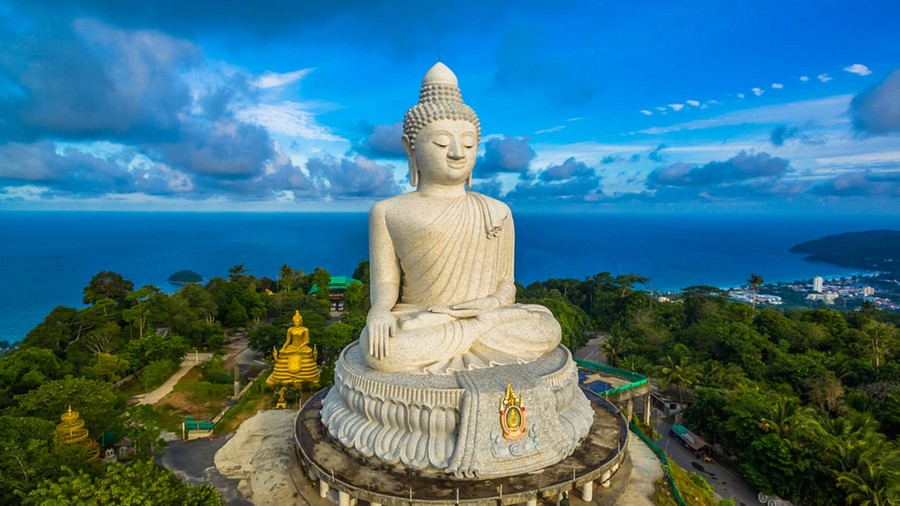
For those who would rather explore the island, your itinerary must include a visit to Phra Phuttha Mingmongkhon Akenakkhiri (Big Buddha). The 45-meter high statue of Buddha is one of Phuket’s landmarks and can be clearly visible from different parts of the island. Free of charge, the temple also houses an exhibition of the Buddha’s life. Furthermore, don’t forget about the terrific view over Chalong Bay. The path up to the temple also offers several viewpoints with a great view over the southwestern part of the island. However, some visitors would claim that the best view of the sunset is from Promthep Cape on the southern tip of Phuket. The viewpoint also has a shrine with elephants and a lighthouse with a small museum inside. Visitors can go on the platform, but the view isn’t too different from the one below. If you take the stairs down coming from the shrine, you can take some beautiful pictures of the cape and enjoy the view at the offshore island Koh Mun and the Nai Harn beach. Be warned though, this is a popular spot to visit, especially at sunset, and it can get crowded. Another viewpoint includes the Panwa viewpoint, which is perhaps one of the less-visited viewpoints on the island. Situated in Cape Panwa atop one of the tallest hills in Phuket, the views from here easily rival any other, with 360-degree vistas out over southern and eastern Phuket.
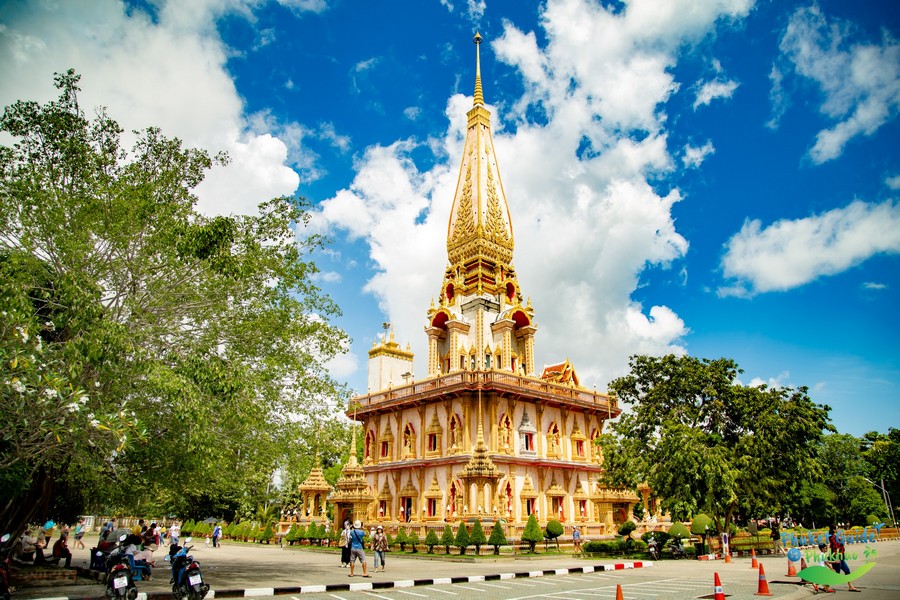
Another of Phuket’s landmarks includes Wat Chalong in the town of Chalong. It is the biggest and most famous temple on the island. Built in the 1800s, the temple is dedicated to Luang Pho Cham and Luang Pho Chuang, two monks who lived during the time of King Rama V. They were said to have remarkable healing powers and till present, the temple is still associated with healing. Additionally, the unique design of the temple is worth noting, including the minute detailing of scenes from Buddha’s life on the pillars. The temple complex houses a fragment of the Buddha’s bone and visitors can have their fortunes told inside the temple as well. Located close to Kata beach, Wat Chalong is also on the road to many other sightseeing spots, including Big Buddha. It is recommended to visit the temple complex in the early morning or late afternoon so you can avoid the crowds.
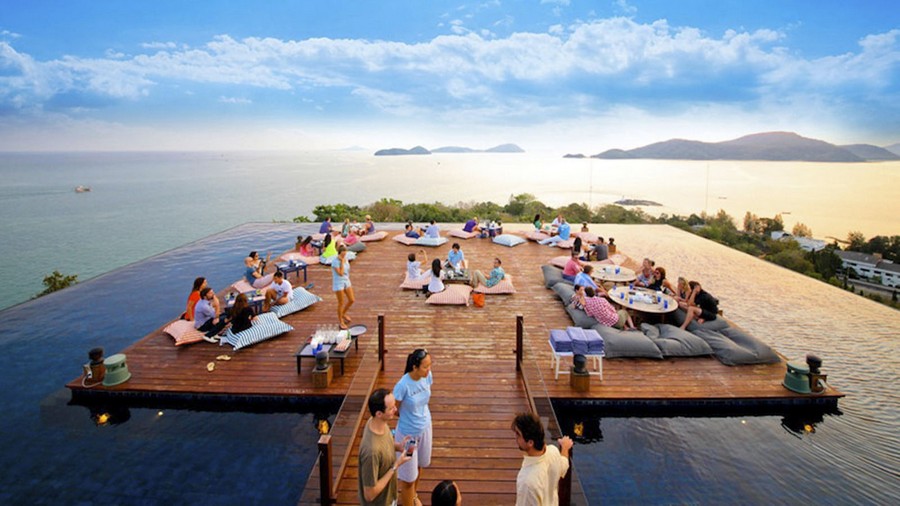
By now, you might tire of touring, but don’t miss out on Wat Khao Rang. One of the lesser-known temples in Phuket, the temple was founded by a monk, Luang Pu Supha who claimed to be the oldest man in the world. Born more than a century ago in a rural area of Issan, he was also known as ‘The Living Monk’ as he lived through the reigns of five Thai Kings of the Chakri Dynasty, from King Rama V to King Rama IX. He began his monkhood at the age of 9 and was ordained as first a Samanen (apprentice) and later a monk. He traveled extensively, mainly by foot, to nearby countries such as Laos, Vietnam, Malaysia, Singapore, India and China and even to France (a feat unusual for monks at the time). He was a humble man, dedicated to serving the public until his death in 2013. The temple remains as a tribute to him and is a spiritual center for many worshippers on the island although it is not as well visited as other temples. The atmosphere of the temple is very peaceful and not at all touristy. The temple also boasts an incredible collection of Thai art and Hindu gods including the Lord of Death, Yommaraj, giants and other traditional carvings. It’s common to see different generations of families come to make merit by donating fresh food as well as alms to monks, usually in the morning before 11 am. Also, if you can travel further up the hill, you’ll get a beautiful view of the town and ocean. You’ll find a handful of restaurants on Rang Hill, which are perfect for taking pictures while enjoying some local food.

The old town of Phuket is worth a mention for its colorful houses, and it is a delightful place to stroll around. Small enough to explore on foot, the area was built from the riches of the tin mining boom of the 18th century. So the architecture is heavily European (Portuguese and British) influenced. Aside from the colorful shops, other architectural highlights within Old Phuket Town are the Sino-Colonial mansions. These stately mansions had initially been the homes of the rich Chinese tin barons. And don’t forget the food.

Although most restaurants offer Thai dishes like pad thai or som tam, authentic Phuketian cuisine is influenced mainly by Hokkien and Malaysian culture and blended seamlessly in its distinct brand of Peranakan cuisine. From delicious seafood such as pla muk neung manao (steamed squid) to khanom jeen kang poo (cold rice noodles) to moo hong (pork belly stew), there is always something new to try. Patong’s Banzaan Market on Sai Kor Road is well-known for its clean and pleasant environment, and a vast choice of fresh food. The market is divided into different sections for meat, seafood, vegetables, exotic fruits, and Thai sweets, among other tasty treats.
However, the island of Phuket comes alive and shines its brightest at night.
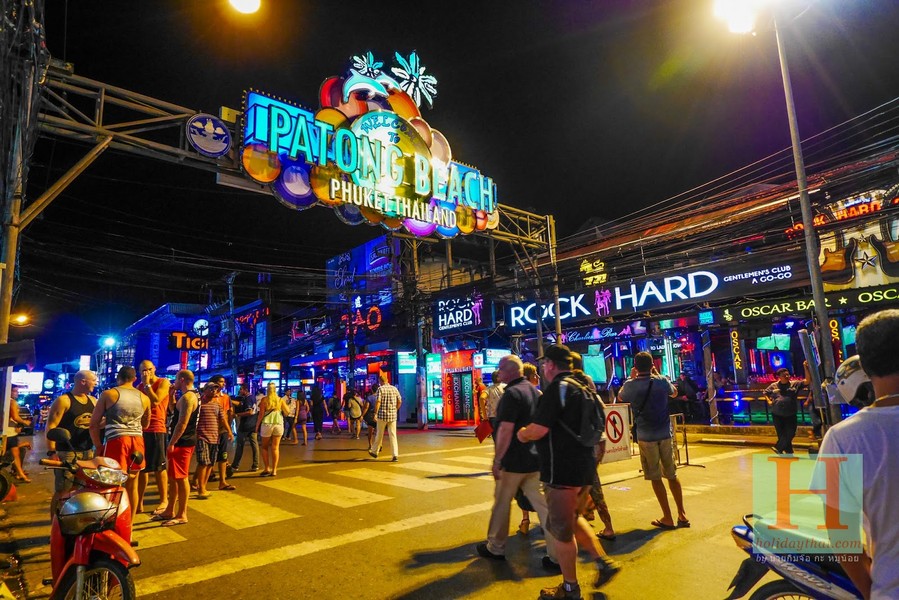
Bangla Road in Patong is one of the best places to visit for a night out. There are plenty of bars and clubs with live music, entertaining shows, and as always, plenty of people. Considered a more raucous version of Khao San Road in Bangkok, this might not be everyone’s scene unless you’re planning to really party. For a more relaxed vibe, head to Kata Hill overlooking Kata Noi Beach, where three little bars invite chilled out beach-bum types to sip cocktails while watching the sun go down. Of course, no city in Thailand is without its night markets and the Naka Weekend Market in Phuket Town is no exception. One of the biggest weekend markets of Phuket, the market offers a vast variety of cheap but tasty street food, souvenirs and clothes from 4 pm till 11 pm. For families, it is recommended to visit the Phuket FantaSea show and the Siam Niramit show, which celebrates Thailand’s rich culture and history.

As a tropical island, the best time to visit Phuket would be mostly dependent on the weather. If you’re not a fan of crowds, avoid January and February, although the crowds are down this year. The rainy season in Phuket runs from April through to October. Many would recommend these months as the best time to visit because the travel rates are much lower than usual and the beaches are less crowded. There is usually a downpour daily in the early evening at this time, but throughout much of the day, Phuket weather is typically sunny and pleasant.
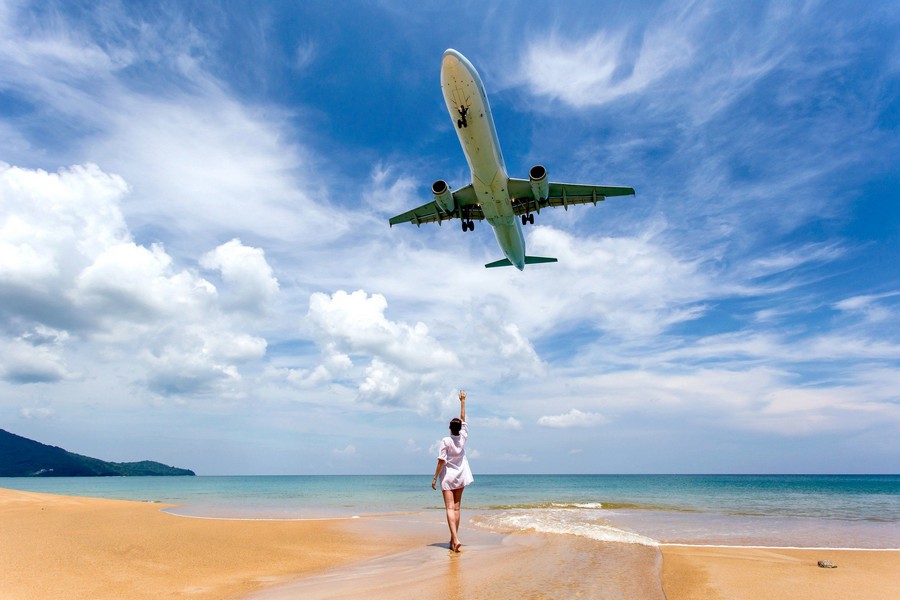
Phuket has an international airport and direct flights are possible from many major airlines, including Air Asia. In addition, the bus terminal sees buses arriving and departing from just about everywhere in Thailand. If you would prefer to travel otherwise, Phuket can also be reached by boat from Krabi on the mainland, plus the surrounding islands of Koh Lanta and Koh Phi Phi (which are also worth visiting). Island hopping is popular, from Phang Nga Bay to the infamous James Bond Island. The lesser-known Similan Islands is a set of unspoiled islands located about 84 km northwest of Phuket. Its pristine white sand beaches and unusual rock formations can be seen aboveground and underwater. Aside from its unique undersea topography, the chance to see manta rays and whale sharks makes the scuba diving around the islands some of the most sought after in the world. Unfortunately, the Similan islands are only open to the public from mid-October till mid-May. However, along with the main island, Phuket is comprised of 32 smaller islands, so there are other places you can visit. There’s Koh Racha Yai, Koh He (Coral Island), Koh Yao Yai, and Koh Bon, to name a few. As one of the biggest tourist hubs in the country, Phuket caters amiably to couples, families, business travelers, and most especially to those who are just looking for a good time.


